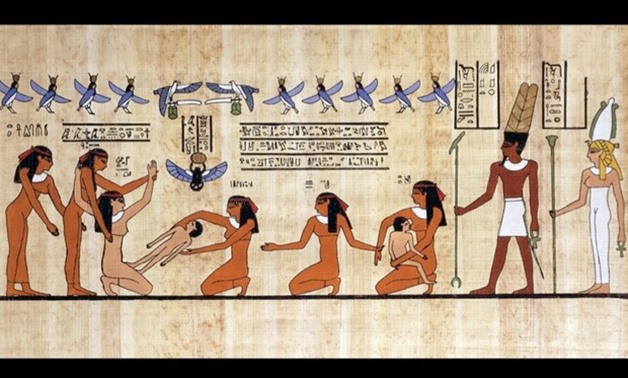The Evolution of Medicine: from Ancient Methods to Modern Cure
Death and dying were not first seen as natural process by humans. They thought that supernatural beings like God spirits or curses were the reason for these.
Making a hole in the skull to allow a mean escape from the body was the most strange way to relieve the illness. Some Trepanned skills have been discovered in Peru, Britain France and other parts of Europe and most patients showed signs of recovery.
There were many other strange and weird ways to treat disease in ancient time:
- In Ancient Chine, Animals' bile were used to cure the variety of diseases such as heart disease, eyes, nose, mouth and throat disease
- In Ancient Greece, Europe and Egypt leeching was an old practice on which leeches were used to suck blood from veins.
- A practice in Romans were brushing their teeth with ammonia-rich Urine believing it would leave their teeth pearly white
We now know that medicine has it's origin in Ancient Egypt. So there were doctors practicing medicine in their civilization as a early 3000 BC. However, their medicine practice were influenced by religion so they believed that diseases were caused by Gods, Demons or Magical Spells.
Despite the fact that medicine has been practiced since 3000 BC. Hippocrates is known as the "Father of Medicine" by many. So we can say that we learned that the cause of the disease was natural not supernatural.
There were numerous additional figures in the history of medicine besides Hippocrates. In the recorded history of medicine, their work is acknowledge and still valued
Gallen:
The most famous physician in the Roman World in the second century A.D made significant contributions to the medicine by dissecting primates in order to learn more about human anatomy (body).
Process of Mummification:
The mummies of Ancient Egypt were used to study human anatomy because the process of mummification involved removing the internal organs.This gave Ancient Egyptians the opportunity to study the internal anatomy of the human body.
Leonardo da Vinci:
Human anatomy was known to the Ancient Egyptian but in the 15th century, an artist name Leonardo Da Vinci was so fascinated by the human body that he dissected the human corpses to draw it's organs in such a detailed manners that his sketches are still used by medical student today.
William Harvey:
In 1628, William Harvey published a book titled "Exercitatio Anatomica de motu Cordis et Sanguinis in Animalibus" (On the motion of the heart and blood in Animals), in which he presented his experiments showing that the heart pumps blood around the body.
17th Century Advancement:
The 17th Century saw many advancement in the medical field such as the invention of the microscopes, the development of drugs for malaria, syphilis, smallpox and establishment of hospitals. These led to the organized approach to the medical care.
18th century of Medical advancement:
In the 18th century, there was a growing interest in anatomy and physiology. The method of vaccination was first developed in India and China and it was introduced to Europe in the early 18th Century. The first disease to be successfully vaccinated against was smallpox.
20th Century Era:
In the 20th century , there was many advancement made in medicine, such as the identification of blood groups in 1901, the discovery of insulin in 1921, the vaccination against tuberculosis and tetanus, the discovery of Penicillin and the development of first dialysis machine in 1943.
Modern era advancements:
The modern era is recognized for it's rapid advances in the technology. New surgical technologies have been invented in the field of surgery. MRI and PTE scans allow doctors to access gene therapy, which help them understand human anatomy and the cause of reproductive disease better.
All of these advancement have led to the significant improvement in the medical field. As our understanding of the medical field grows, we will have a better understanding of human anatomy and physiology and much more




Comments
Post a Comment